Abstract
Medium that has been bathing organ cultures of resorbing bone contains a factor that is chemotactic for cultured Walker carcinosarcoma cells, as assayed by the Boyden chamber technique. There is a positive correlation between the chemotactic activity released by the resorbing bones and the extent of resorption as measured by release of previously incorporated 45Ca from the bones. Generation of the chemotactic factor occurs independent of the humoral mediator of bone resorption. The tumor cell chemotactic factor has a steep dose-response curve, with a fall from maximal to minimal activity extending over a four-fold dilution. The chemotactic activity is stable to heating and has an estimated molecular weight of 6000 daltons, as determined by gel filtration chromatography and retention of activity following dialysis. The chemotactic activity has been distinguished from the tumor cell chemotactic factor derived from the fifth component of complement because the former is not inactivated by antiserum to C5 and because it is chemotactic for EL-4 lymphoma cells, whereas the latter is not chemotactically active for these cells.
Full text
PDF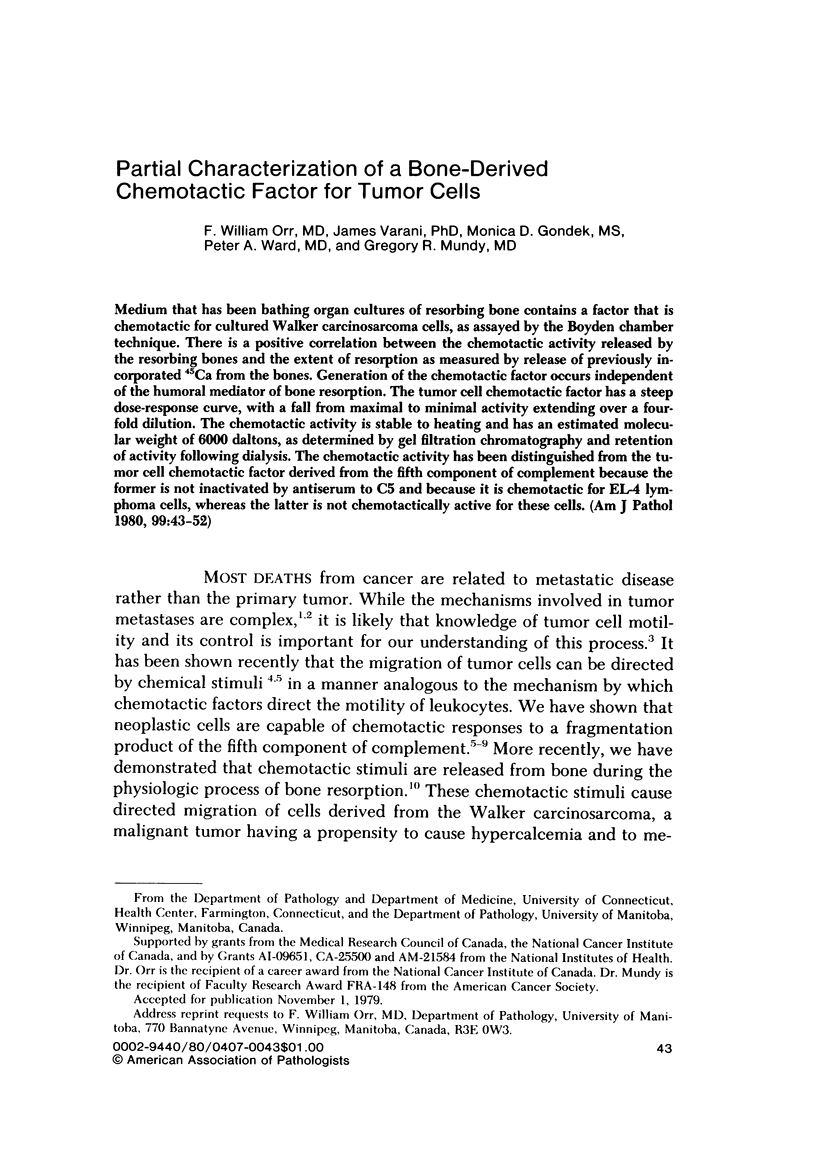
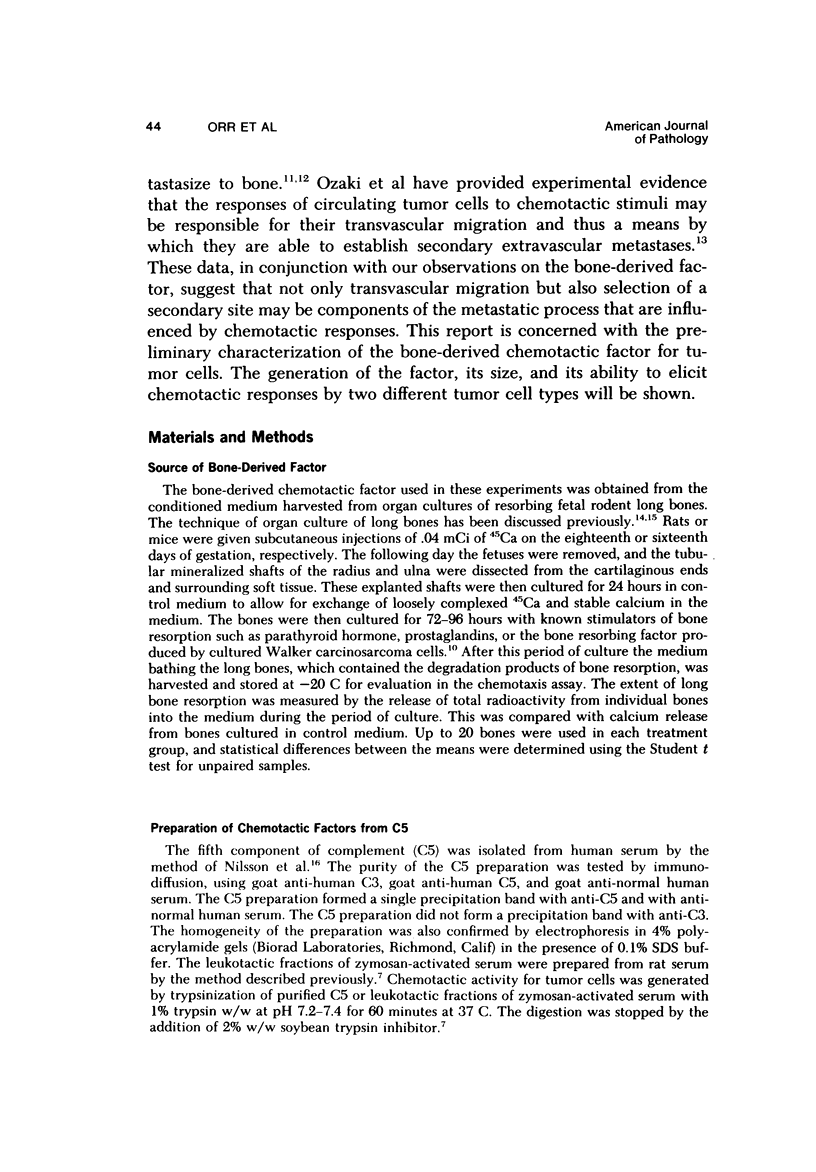
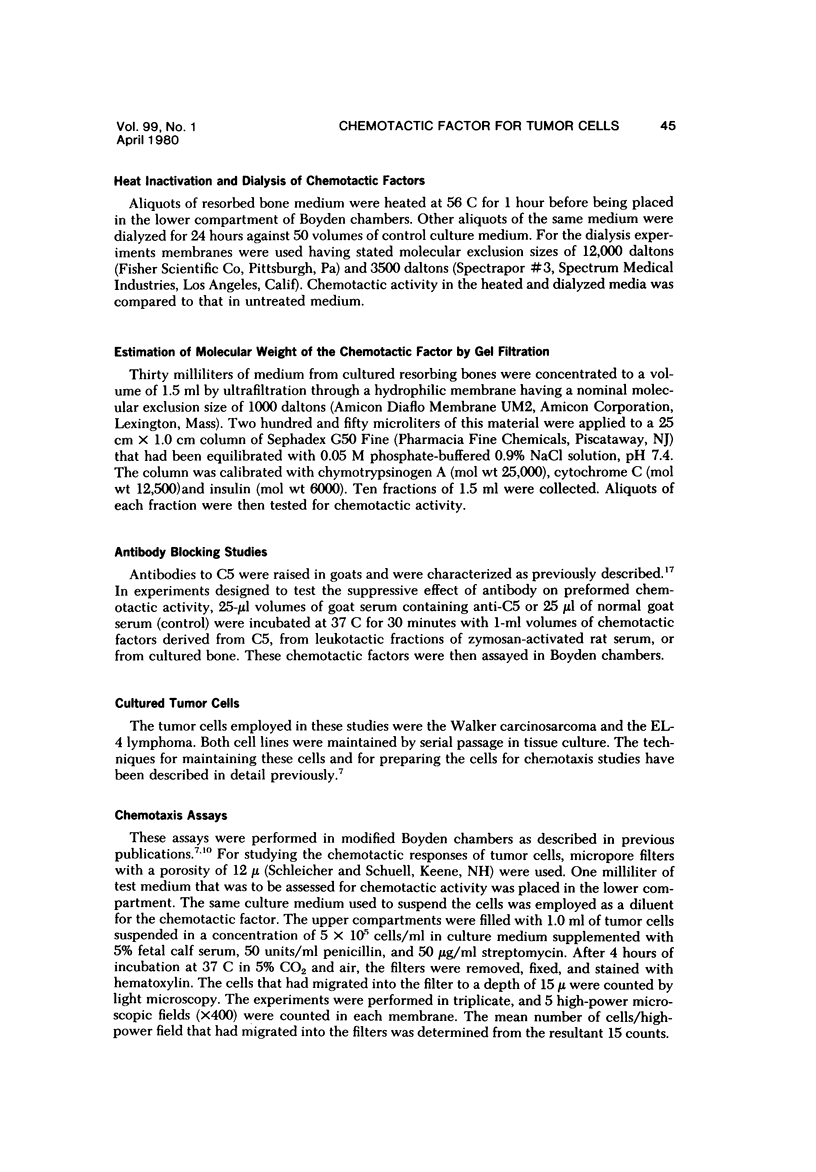
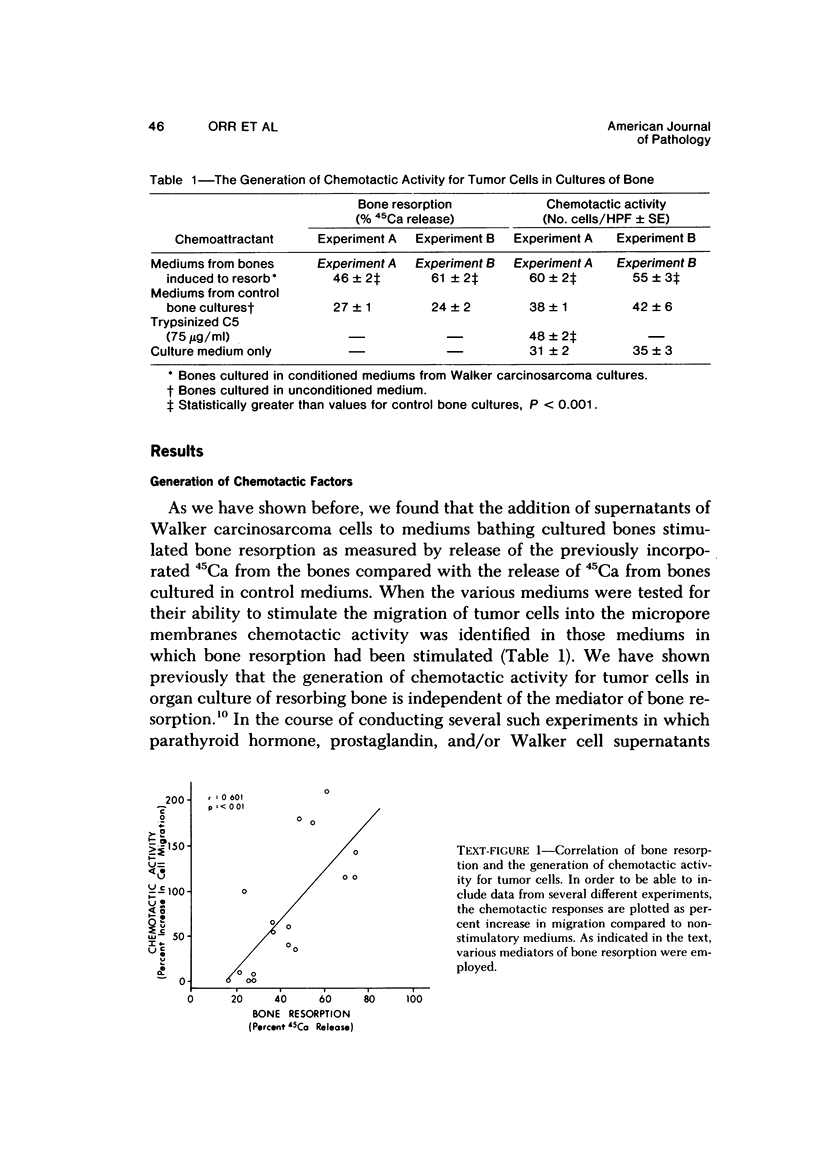
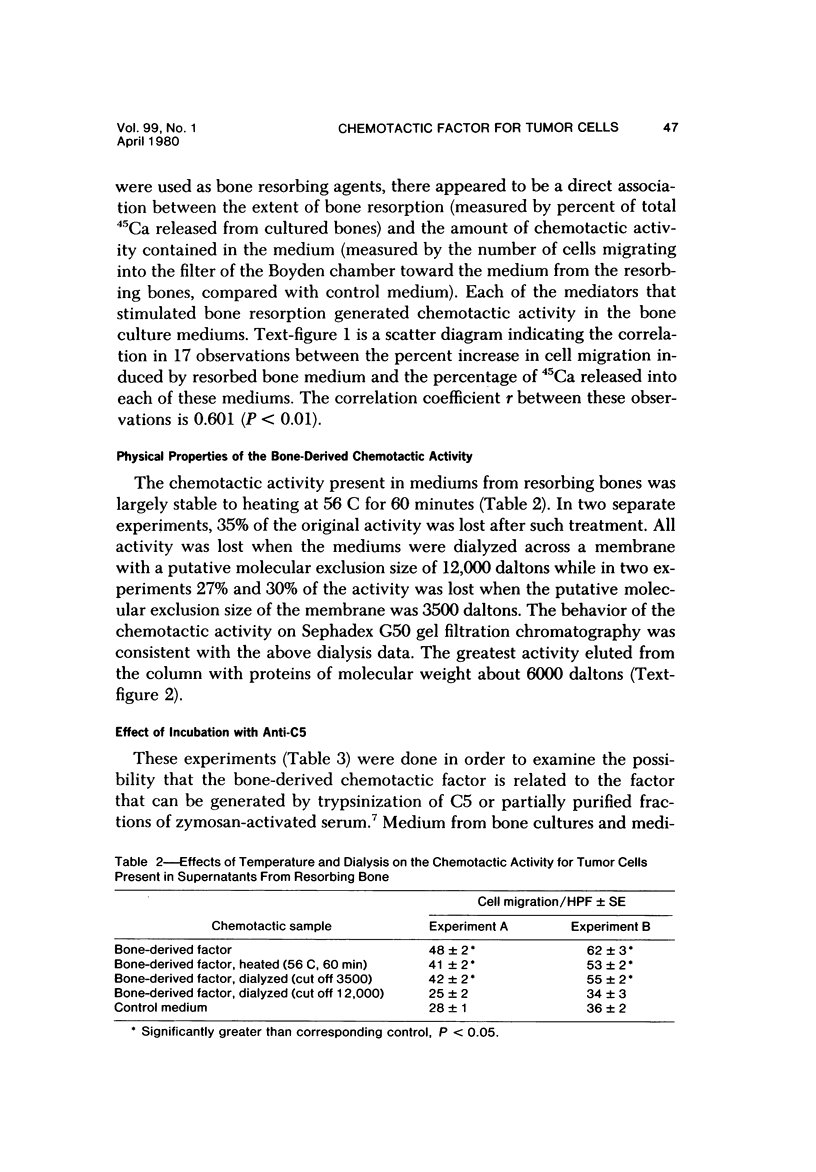
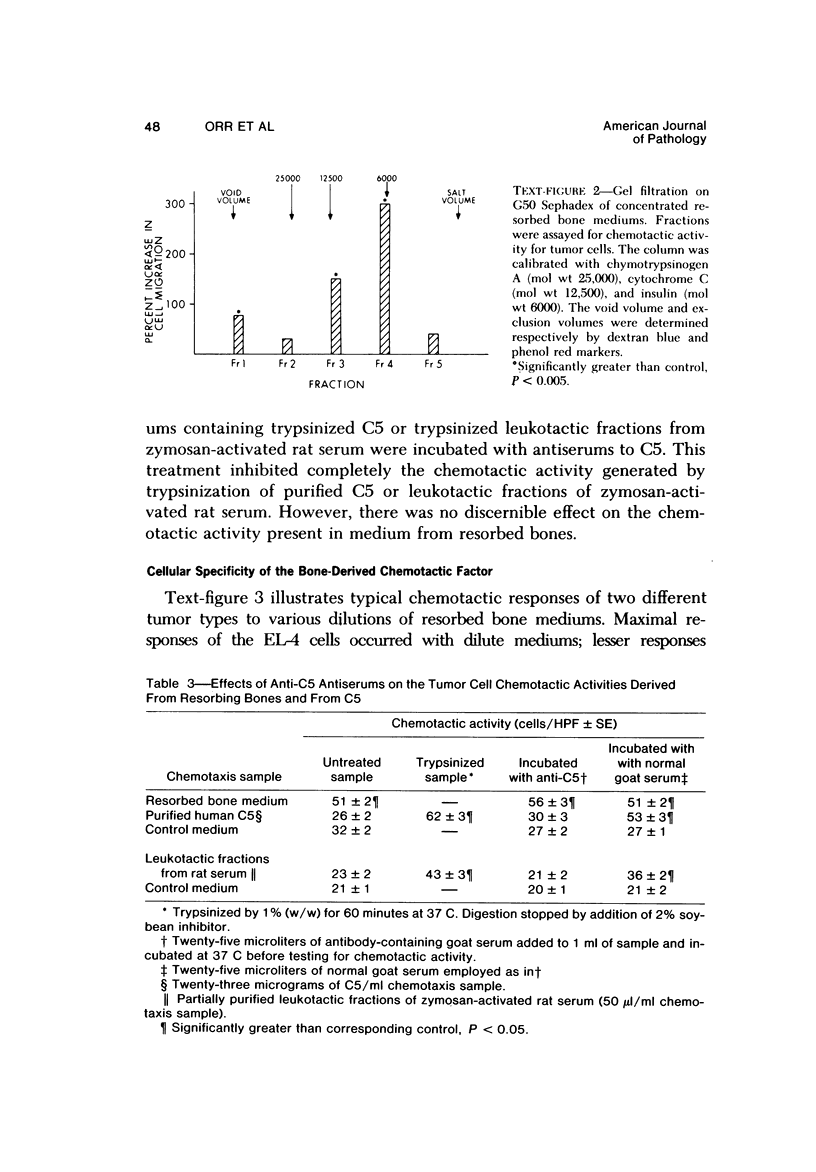
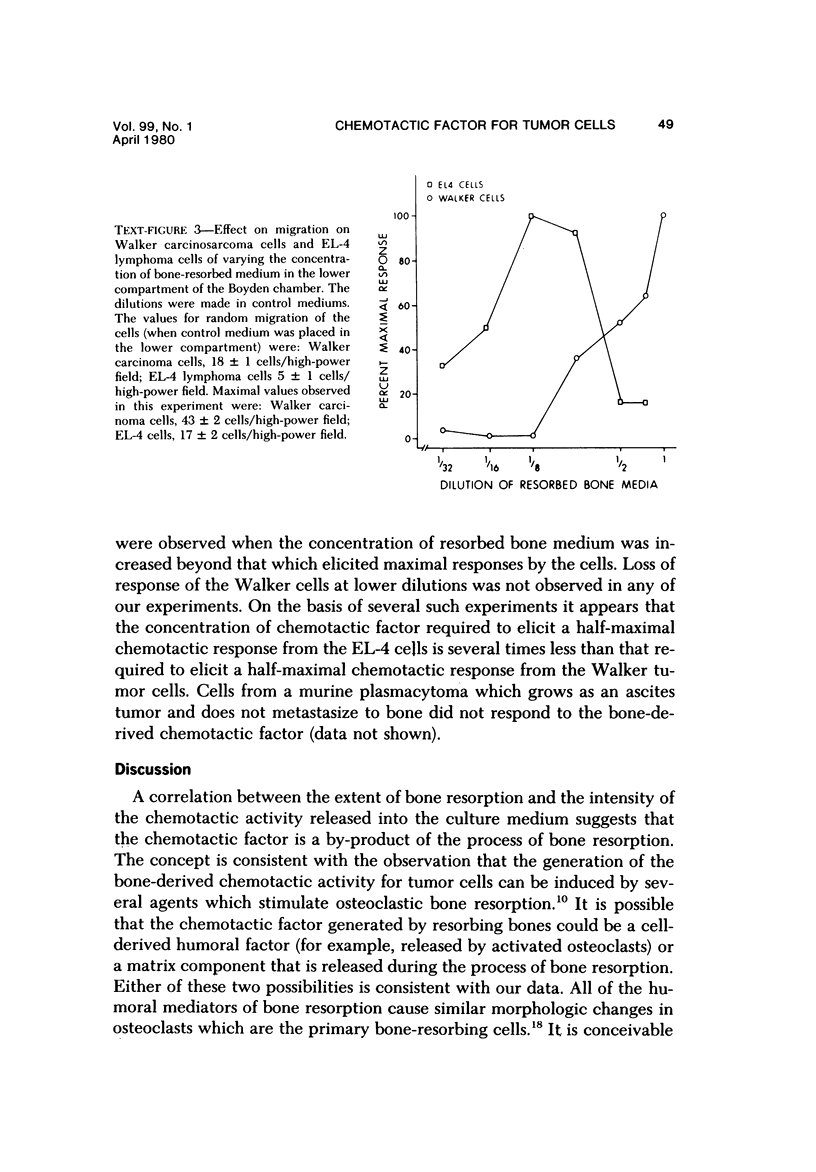
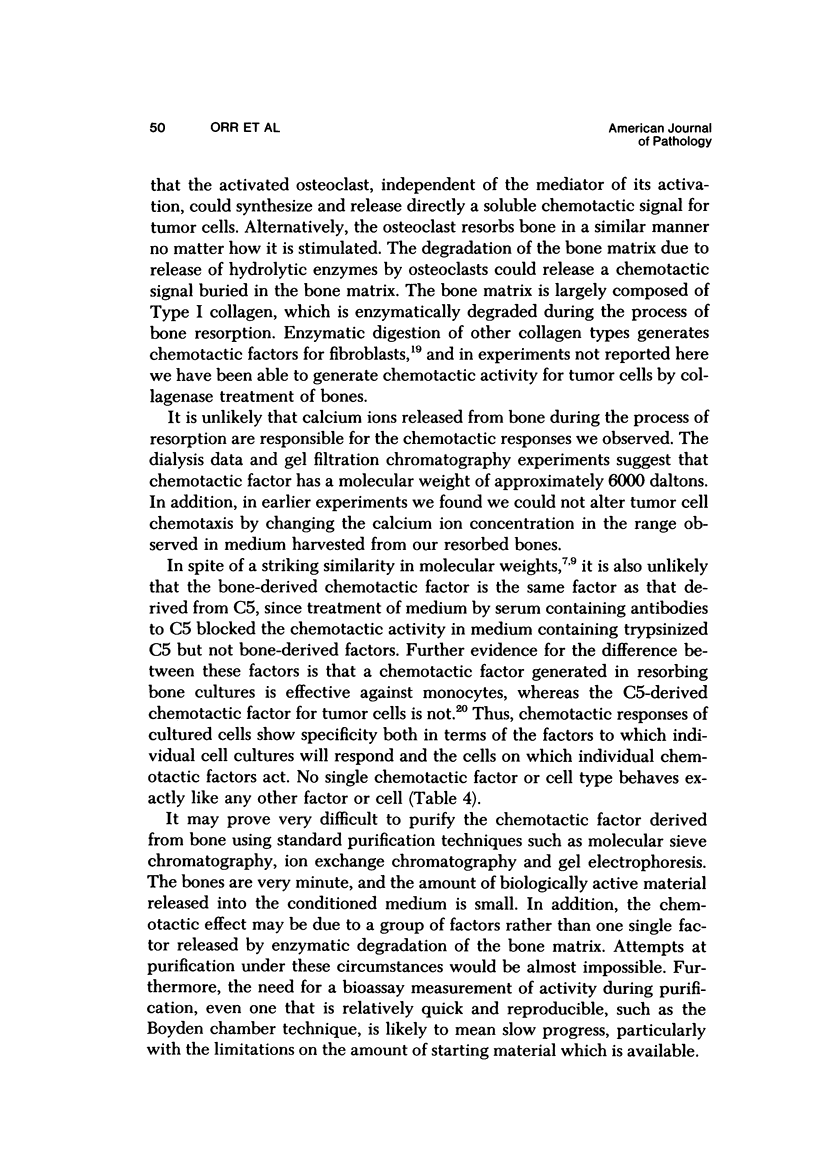
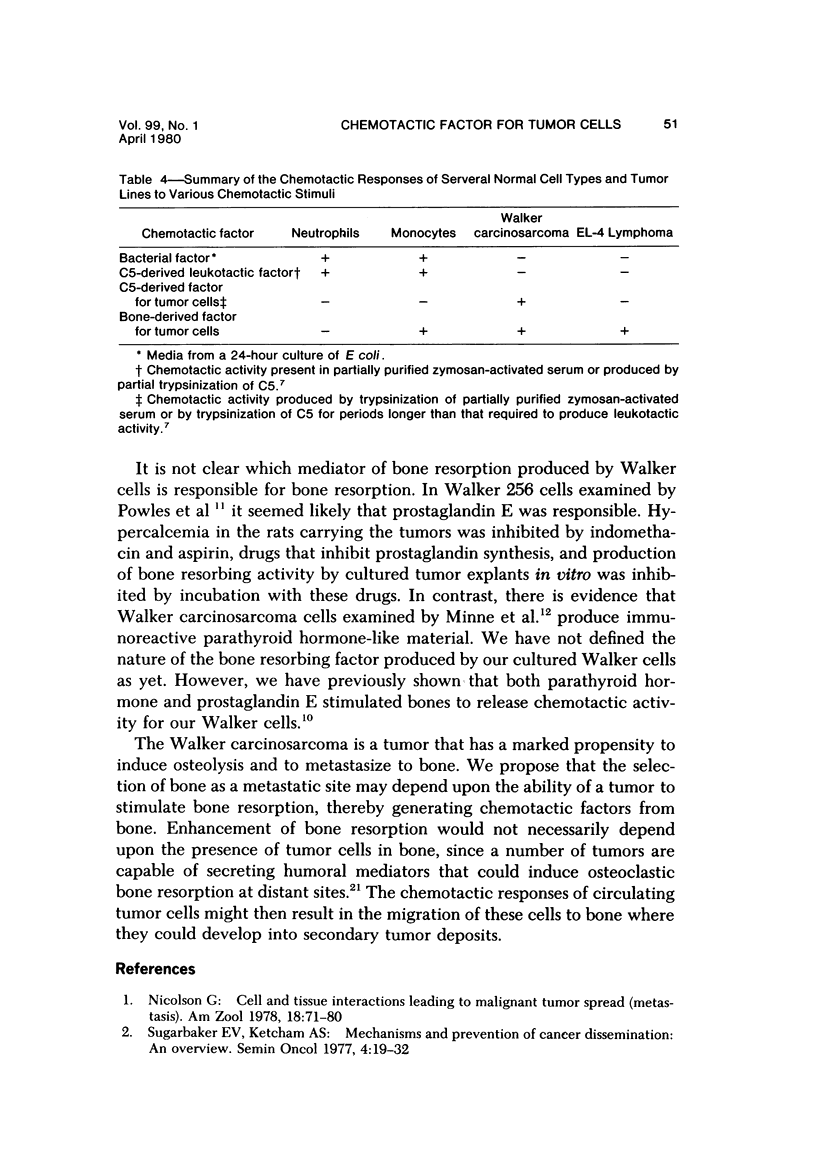
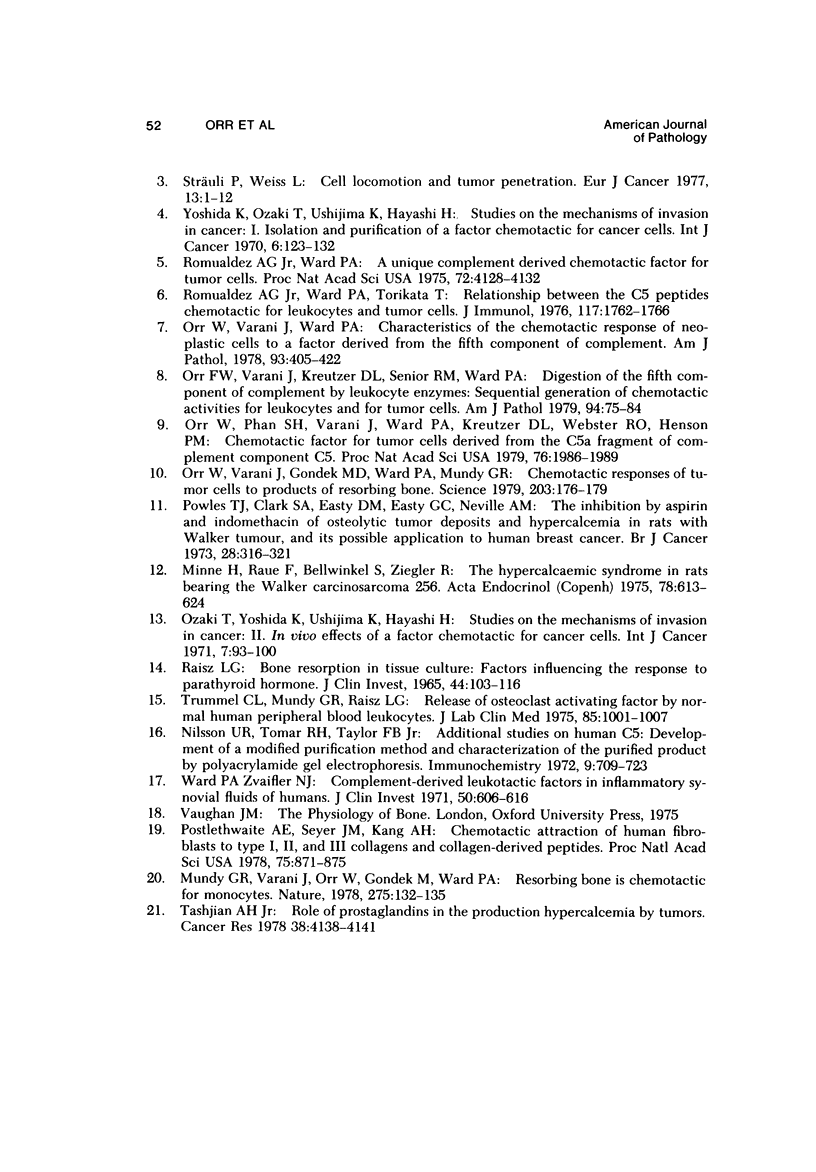
Selected References
These references are in PubMed. This may not be the complete list of references from this article.
- Minne H., Raue F., Bellwinkel S., Ziegler R. The hypercalcaemic syndrome in rats bearing the Walker carcinosarcoma 256. Acta Endocrinol (Copenh) 1975 Mar;78(3):613–624. doi: 10.1530/acta.0.0780613. [DOI] [PubMed] [Google Scholar]
- Mundy G. R., Varani J., Orr W., Gondek M. D., Ward P. A. Resorbing bone is chemotactic for monocytes. Nature. 1978 Sep 14;275(5676):132–135. doi: 10.1038/275132a0. [DOI] [PubMed] [Google Scholar]
- Nilsson U. R., Tomar R. H., Taylor F. B., Jr Additional studies on human C5: development of a modified purification method and characterization of the purified product by polyacrylamide gel electrophoresis. Immunochemistry. 1972 Jul;9(7):709–723. doi: 10.1016/0019-2791(72)90015-8. [DOI] [PubMed] [Google Scholar]
- Orr F. W., Varani J., Kreutzer D. L., Senior R. M., Ward P. A. Digestion of the fifth component of complement by leukocyte enzymes. Sequential generation of chemotactic activities for leukocytes and for tumor cells. Am J Pathol. 1979 Jan;94(1):75–83. [PMC free article] [PubMed] [Google Scholar]
- Orr W., Phan S. H., Varani J., Ward P. A., Kreutzer D. L., Webster R. O., Henson P. M. Chemotactic factor for tumor cells derived from the C5a fragment of complement component C5. Proc Natl Acad Sci U S A. 1979 Apr;76(4):1986–1989. doi: 10.1073/pnas.76.4.1986. [DOI] [PMC free article] [PubMed] [Google Scholar]
- Orr W., Varani J., Gondex M. K., Ward P. A., Mundy G. R. Chemotactic responses of tumor cells to products of resorbing bone. Science. 1979 Jan 12;203(4376):176–179. doi: 10.1126/science.569363. [DOI] [PubMed] [Google Scholar]
- Orr W., Varani J., Ward P. A. Characteristics of the chemotactic response of neoplastic cells to a factor derived from the fifth component of complement. Am J Pathol. 1978 Nov;93(2):405–422. [PMC free article] [PubMed] [Google Scholar]
- Ozaki T., Yoshida K., Ushijima K., Hayashi H. Studies on the mechanisms of invasion in cancer. II. In vivo effects of a factor chemotactic for cancer cells. Int J Cancer. 1971 Jan 15;7(1):93–100. doi: 10.1002/ijc.2910070111. [DOI] [PubMed] [Google Scholar]
- Postlethwaite A. E., Seyer J. M., Kang A. H. Chemotactic attraction of human fibroblasts to type I, II, and III collagens and collagen-derived peptides. Proc Natl Acad Sci U S A. 1978 Feb;75(2):871–875. doi: 10.1073/pnas.75.2.871. [DOI] [PMC free article] [PubMed] [Google Scholar]
- Powles T. J., Clark S. A., Easty D. M., Easty G. C., Neville A. M. The inhibition by aspirin and indomethacin of osteolytic tumor deposits and hypercalcaemia in rats with Walker tumour, and its possible application to human breast cancer. Br J Cancer. 1973 Oct;28(4):316–321. doi: 10.1038/bjc.1973.154. [DOI] [PMC free article] [PubMed] [Google Scholar]
- RAISZ L. G. BONE RESORPTION IN TISSUE CULTURE. FACTORS INFLUENCING THE RESPONSE TO PARATHYROID HORMONE. J Clin Invest. 1965 Jan;44:103–116. doi: 10.1172/JCI105117. [DOI] [PMC free article] [PubMed] [Google Scholar]
- Romualdez A. G., Jr, Ward P. A. A unique complement derived chemotactic factor for tumor cells. Proc Natl Acad Sci U S A. 1975 Oct;72(10):4128–4132. doi: 10.1073/pnas.72.10.4128. [DOI] [PMC free article] [PubMed] [Google Scholar]
- Romualdez A. G., Ward P. A., Torikata T. Relationship between the C5 peptides chemotactic for leukocytes and tumor cells. J Immunol. 1976 Nov;117(5 PT2):1762–1766. [PubMed] [Google Scholar]
- Sträuli P., Weiss L. Cell locomation and tumor penetration. Report on a workshop of the EORTC cell surface project group. Eur J Cancer. 1977 Jan;13(1):1–12. doi: 10.1016/0014-2964(77)90222-5. [DOI] [PubMed] [Google Scholar]
- Sugarbaker E. V., Ketcham A. S. Mechanisms and prevention of cancer dissemination: an overview. Semin Oncol. 1977 Mar;4(1):19–32. [PubMed] [Google Scholar]
- Tashjian A. H., Jr Role of prostaglandins in the production of hypercalcemia by tumors. Cancer Res. 1978 Nov;38(11 Pt 2):4138–4141. [PubMed] [Google Scholar]
- Trummel C. L., Mundy G. R., Raisz L. G. Release of osteoclast activating factor by normal human peripheral blood leukocytes. J Lab Clin Med. 1975 Jun;85(6):1001–1007. [PubMed] [Google Scholar]
- Ward P. A., Zvaifler N. J. Complement-derived leukotactic factors in inflammatory synovial fluids of humans. J Clin Invest. 1971 Mar;50(3):606–616. doi: 10.1172/JCI106531. [DOI] [PMC free article] [PubMed] [Google Scholar]
- Yoshida K., Ozaki T., Ushijima K., Hayashi H. Studies on the mechanisms of invasion in cancer. I. Isolation and purification of a factor chemotactic for cancer cells. Int J Cancer. 1970 Jul 15;6(1):123–132. doi: 10.1002/ijc.2910060116. [DOI] [PubMed] [Google Scholar]


